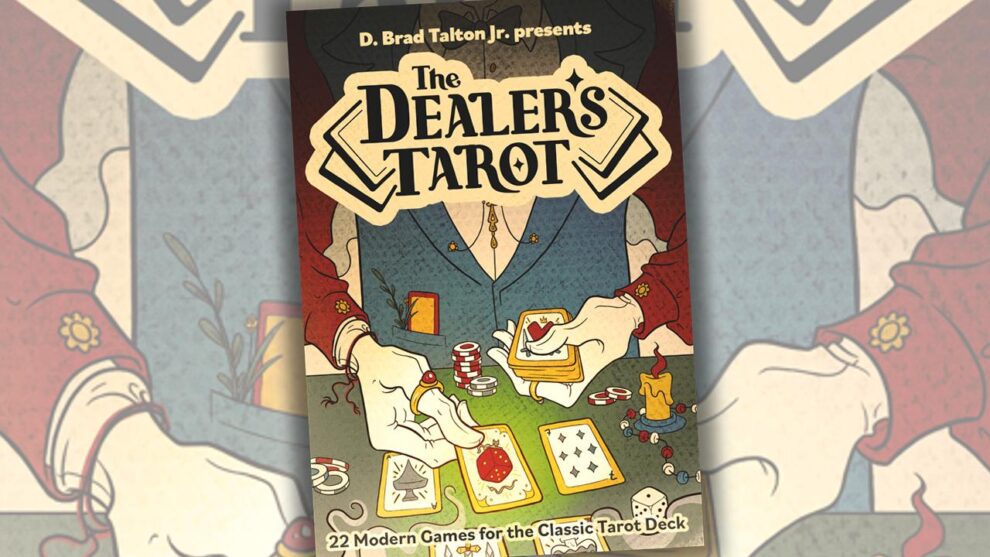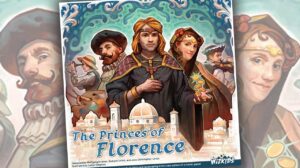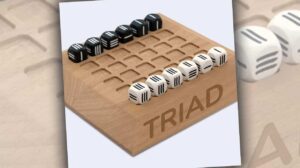Disclosure: Meeple Mountain received a free copy of this product in exchange for an honest, unbiased review. This review is not intended to be an endorsement.
I’m about a quarter of the way through reading War & Peace, Leo Tolstoy’s novel about Russian aristocracy during the Napoleonic Wars. This is my third attempt in twenty years at reaching the summit. “This time, I’ll make it,” Sisyphus muttered to himself. War & Peace is, as you may have heard or might even know from experience, a long, slow, and occasionally boring read. I am enjoying it, I would even go so far as to say that I love it, but I wouldn’t begrudge anyone who wasn’t interested.
My friend Jacinth, for example. “I think we as a society have moved past the point where reading such books makes sense,” he said. I get where he’s coming from. War & Peace is very much a creature of its time. It is hardly the only pre-20th century novel to weigh more than a healthy newborn, and much of that runtime is dedicated to information that seems wearingly unnecessary to the modern audience. I’m here for the hot goss—I have heard that Count Bezukhov is fallen ill, gravely so, and there is much uncertainty as to the state of his will, as apparently he wishes to leave all to his dear Pyotr Kirillovich who is, of course, illegitimate, and therefore ineligible to inherit, but they say there is a letter formalizing an adoption, a letter whose existence would certainly vex Prince Vassily Sergeevich Kuragin, who would otherwise stand to benefit most directly from the unfortunate death of the Count, and who has hired men to locate this letter, and suffice it to say that this has been the talk of all of Moscow—rather than the prolonged descriptions of military campaigns.
But that’s reading it now. It’s important to remember that those lengthy descriptions of Napoleon’s machinations may well have been the only detailed explanation of that conflict that the contemporary audience ever saw. They didn’t have Wikipedia. They didn’t have The History Channel (back when the History Channel would have been about the Napoleonic Wars rather than the possibility that Napoleon was a lizard person). They couldn’t pop open a history book with colored photos. The details that to us now feel ancillary were not only absorbing, they were likely for many people the most exhilarating parts of the book. They made both the world of the story and the world of the reader feel bigger.
Plus, I mean, they had so much more time to fill. There was no Netflix, no podcasts, no TikTok, nothing begging to actively consume your passive time. The Dealer’s Tarot, too, is a relic of such a time, a collection of card games for a traditional French tarot deck from designer D. Brad Talton Jr. These sorts of collections used to be a common sight. Much as the internet has taken from us physical volumes of the complete Encyclopedia Britannica, 1,000 page novels that seem to be mostly about architecture, and the ability to hold onto a thought for more than five seconds, compilations of card games are no longer a common occurrence.
Included in this book are 22 card games, for anywhere between one and eight players. Don’t be fooled by the traditional approach of the medium; these are not all traditional card games. In addition to shedding games like The Lottery and climbing games like The Duel, there are bidding games, dungeon delvers, line battlers, and more. The Dealer’s Tarot takes a decided modern approach to the sorts of games you can play with a simple deck of cards, though it maintains approachability throughout its offerings.
The games themselves are alright. The presentation is most of the joy here. There is something charming about pulling a book off the shelf, flipping to a random page based on the number of players you have at hand, and learning a new game. It is a form of reclamation, taking from the internet what we long ago surrendered. It has also given me cause to think about the role of cards in society, obvious though the conclusions may be.
Much like a massive novel, cards are a good way to kill time. War & Peace is filled with references to card games, like Prince Vassily’s beloved Boston, and it’s a common sight in period films set before 1900 to see people of all classes and castes sitting around a table playing a card game of some variety or another. The Dealer’s Tarot offers a look back, and offers a lovely collection of games with which to while away the hours. When I sat down to play a game of Solitaire on my mom’s PC back in 1996, little did I know that I was communing with the ancestors. Spend enough time with it, and you’ll find yourself wondering what people did before the invention of the deck of cards?
(They played mancala.)











